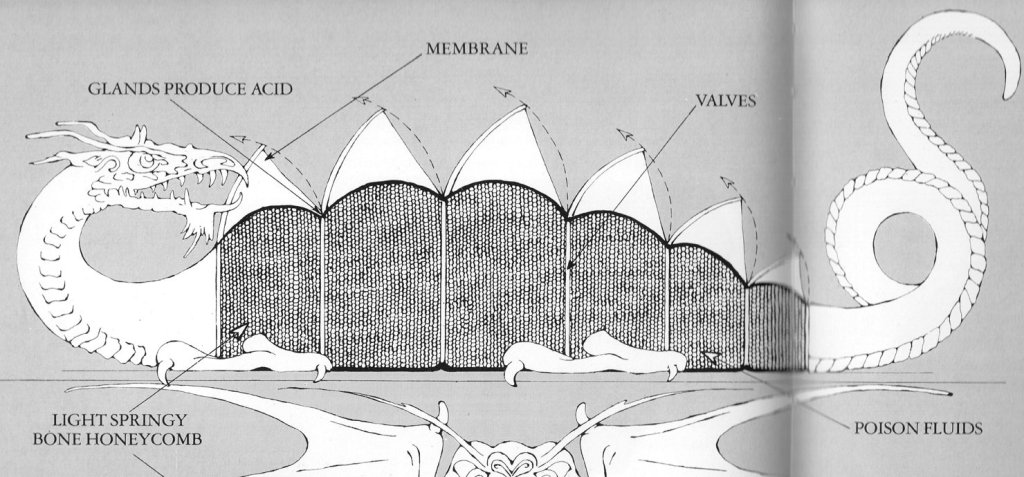Black Hole Survival Guide by Janna Levin
My rating: 5 of 5 stars
Black Hole Survival Guide – is probably top ten of Survival Guides in the Universe (even better than The Zombie Survival Guide: Recorded Attack; Downtown LA). Can one pull trough the math behind the existence of black holes and still come out sane on the other side? Well, if math is not your strength but you’re still willing to grapple with inherent complexities in a readable form and enticing style, this is your entry. Even without the tongue-in-a-cheek survivalist or prepper add-on, it is still a remarkable book about the most extreme objects in the universe.
I truly appreciate an author taking time to take us along, to cognitively estrange us from everything we thought we knew about the tangible universe, and funnel us towards things that lie beyond any type of immediate perception or empirical experience. No wonder, since time itself begins to comport weirdly around them. Benjamin Bratton wrote in his intro to The Terraforming about the impact of the “The Black Hole”(of M87*) picture, and where this representation stands in a lineage of astronomic imaging. Blue Marble or Earthrise images are still images of the Earth, still operative, still clinging to the geocentric iconicity that props up “transitional humanisms” of an unfinished Copernican Turn. The Black Hole image is frightening because it resists mirroring back, and in a way this non-operative image makes our planet turn into a camera that is not looking “up” or “in” but “out”. The hyperdense void enclosed by the Event Horizon is frightening, and not just because it “uproots the human” as in Heidegger’s angsty 1966 interview in Der Spiegel. Once the certitude of extinction seeps in and uprootedness is taken as a given, there is room to move on. This “something” that is a crushing time-space nothingness- makes us care here on Earth for an impossibly remote invisible object (its light arriving from the Eocene to us) at odds with every other single phenomenon we encounter in our earthly life.
Black holes have become huge imaginary and cultural attractants in SF, movies, books, artwork, philosophy, etc At the same time, even when dealing with black holes – cosmic or bodily, I agree that we should beware of male authors or artists making claims about emptiness since as Audrey Wollen’s beloved meme keeps remind us that ‘Girls own the void’.
How is it that we start to care about something so remote from everything that we know or care about?! Janna Levin guides us patiently, step by step towards this all-engulfing event horizon & even towards what might lie beyond it. This travelogue puts any other travel (cheap flight or X spaceship included) to shame. It is a rendezvous with an astronomical feature that we never think as – tangible, as touchable, and that will always keep being doggedly theoretical. It was a theoretical object not so long ago. Janna Levin makes the impossible happen – an embodied experience of what it would be like to go down the drain of a black hole, in fact, several such black holes. Another important inescapable fact is that black holes have the same status as elementary particles, and this is definitely hard to grasp. No matter how big, they are all equal in a way that all atoms of the same kind are equal.
Yes, we think we know about trees falling in the pre-human forest without our minds realizing or sensing it, but what about a non-sensuous perception of objects whose ‘nothingness’ shapes the largest galactic structures, giving a twist to everything, even our spiral galactic core.
This delightful book makes Janna Levin stands tall on my list of fav STEM outreach examples. The book works for all age groups and even has some great illustrations to make her point. Exposing us to remote larger-than-life forces, she managed to pull me beyond a reality of terrestrial lockdown and uncertain futures. Scientists or authors with a background in life sciences writing sci-fi (i am thinking here of Peter Watts, Adrian Tschaikowsky, Chris Beckett or the great Joan SLONCZEWSKI!) have a special spot in my heart. I live for (and love) speculative fiction – yet I still recognize that without Kip Thorne’s contribution to Christopher Nolan’s filmic oeuvre the CGI-digitally designed black hole Accretion Disk in Interstellar might have felt quite anodyne, maybe less appetizing and less aesthetically entrancing and tangible.
So I think that black holes via Black Hole Survival Guide – will definitely become more accessible to non-specialists in a way that is not dumbing down nor patronizing, attractive in the most literal sense of the term. Ominous and good to speculate (get comfy?) with, the STEM scientist/physicist/astronomer by training makes a good friend to have along on a deep dark cosmic journey. I could not pinpoint what are the new “rules of the game” that Janna Levine brings or if there is any magic secret to this scientific imaginary (i want to believe that imagination pools and informs both rigorously scientific and non-scientific speculative endeavors). From that special skillset, if I can single out one- is the ability to sum up the current state of knowledge on a given topic. What are the implication of black holes, unthinkable (for us) implications((for now) not just on stars but carbon-based bodies and minds such as ours, seemingly prisoners of our isolated sensorium and our speck of the universe?
I appreciate her own subjective-objective intervention – the informed ability to lean on other available explanations, or limit or circumscribe explanations while reaching out for other theoretically sound possibilities.
This I find vital. There is of course and the silliness and the sound advice one gets (how to choose which black holes to fall into! answer: the larger the better) along the way. As remote as it sounds – you can play around in your head with monstrous black hole peculiarities that seem to multiply. As we get closer to these cosmic sublime objects we seem to get a taste of infinities. As we taste some of the limits of science when approaching or entering a black hole we look beyond. To be able to hold on to this you need to envision the precise moment when you start seeing the back of your head (truly) and Janna Levin brings us as close to that as currently possible.
View all my reviews
Tag Archives: limits
1489 – Flight of Dragons (1982)

Flight of Dragons was a Japanese-US co-production 982 long feature animated fantasy film produced and directed by Jules Bass and Arthur Rankin, Jr. (of The Hobbit and other 70s 80s animations).
There is a deeply personal connection with this animation and its cheesy song bring back dead media memories. This being one of the illegal VHS tapes I watched as an enthralled kid with Andrei Ciubotaru my high school friend (artist and art teacher now) and few others in 80s Romania. Pirated VHS where the only way to get such material, or via neighboring countries TV station depending where you were (Serbia, Hungary or in my case Bulgaria). Most of these VHS were dubbed by one single person – film critic Irina Nistor who did voices for all characters and for hundreds if not thousands tapes. This one was a rare EN copy.
Apart from being a childhood artefact it still stands the test of time for me. It is one of the great animations of the 80s and has this strange bizarre effect of mediated arrival via a winded move; a hybrid of US based D & D material content drawn by the top of the art blooming Japanese anime industry of the times.
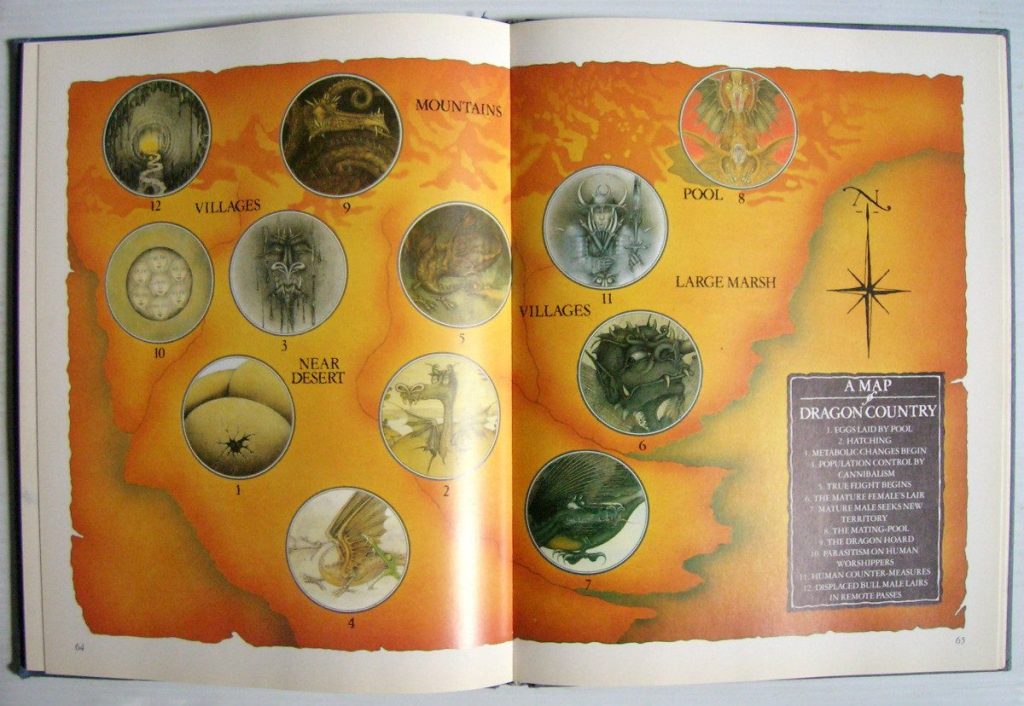
It is also interesting in other regards. It is a animation based on a speculative evolution book from 1979 by Peter Dickinson with the same name, inspired itself by the speculative biology theories developed inside the Earthsea Cycle by Ursula K LeGuin (1968-2001), who I didn’t know much about at the time.
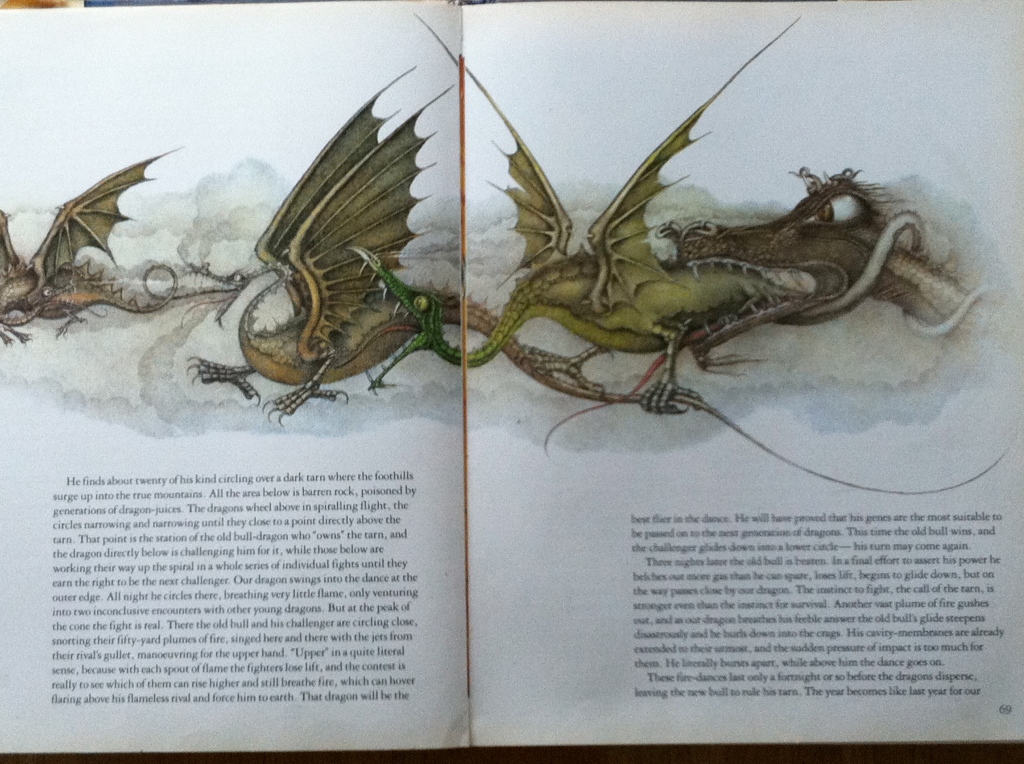
It is a sort of scientific explanation (or pseudo-scientific, take it how you want) that naturalizes these mythical monsters – the dragons. All those probable explanation of the dragon physiology, metabolism and chemical peculiarities (such as the hydrochloric acid thesis) from the movie are all present in this earlier book. The impetus to rationalize or to give scientific importance to various legendary, fables or superstitions may seem naive or misleading but I think there is great merit to that. Not only does it blur otherwise highly patrolled borders around what is a proper object of science but it also shows the deep interplay btw science, occultism, alchemy and Enlightenment. It also show that fictions have becoming shaping forces on their own, no matter if false of true, they are living their imprint on the world we live in. There is also the point of the peculiar history of the history science itself, especially the Scientific Revolution in its hermetic or esoteric threads. Thinking here of Frances Yates books in particular but also about the admirable work done by Erik Davis in his new book High Weirdness and at https://techgnosis.com/ in widening and following a fertile mutual interplay. A particularity of the animation is its emphasis on magic rather than religion or even sorcery.
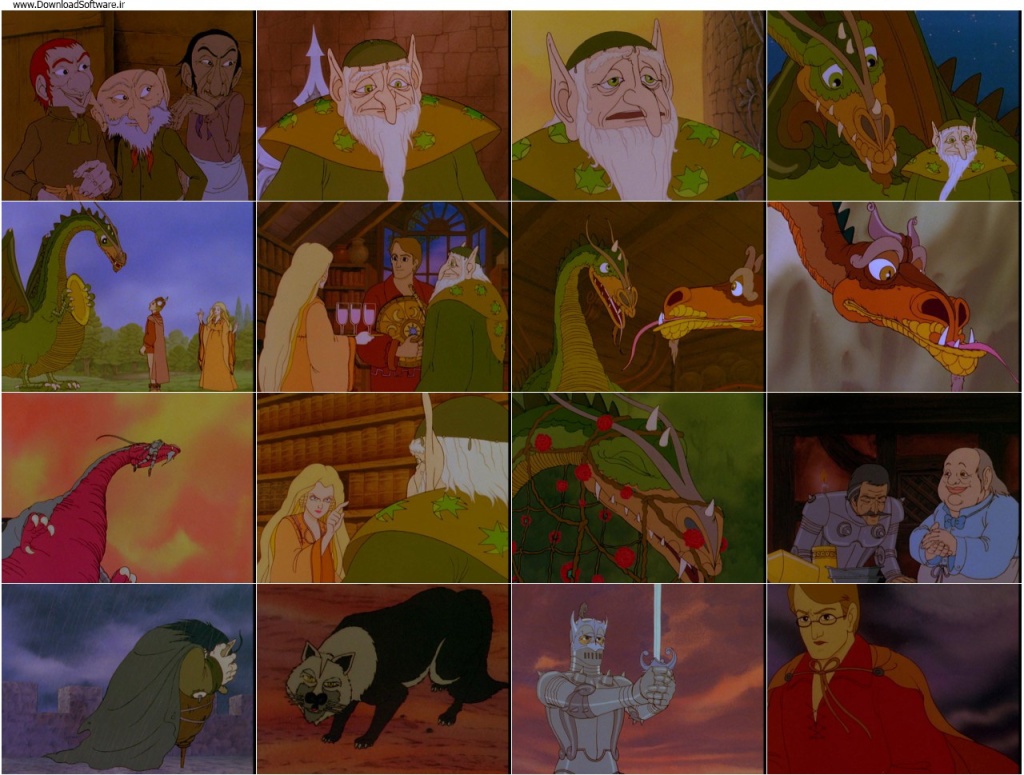
The Flight of Dragons could not be more actual than nowdays in an age where flat earthers and hollow earthers and neo-barbarians co-exist with Netflix and where fictions and in particular, seemingly fringe creepy pasta fictions have definitely a life of their own. When the fringe is center stage, one is now aware both of the magical powers of science and of the “meme magic” (the infamous #memewarfare or CCRU hyperstitions), and more disturbingly of the big exploitable reservoirs and operational powers of online and offline hate. Otherwise it is an early example of D & D and plays on the fact that it is all a big animated board game. This fact reappears several time during the movie. Once played by the former scientist P. Dickinson and game board designer that actually plays the movie characters in a pawn shop setting were with the owner trying to get him to invest in his new gaming enterprise. Another time it is Ommadon himself, the dark wizzard that uses it as surveillance technology, like Sauron, monitoring the various characters in their moves towards his domain. It is never clear who is playing who and who is being written by whom – as much as thethe animated character Dickinson seems to be precisely the author f thethe dragon speculative evolution book.
I will focus on a few incredible moments from this animation. The first is the setting of a (board game) meeting of the ruling multicultural wizzards and their panic response; Carlinus the Green Wizzard (power of life, growth, everything green), Solaris the Blue Wizzard (sea, heavens) and Golden Wizard Lo Tae Zhao(ether, light) and Ommadon (black magic and evil) to discuss the need to protect and basically make invisible the magical realm. It is basically deterritorialization and reterritorialization in action. In particular this disenchantment manifests itself in an eco-primitivist context, the water wheels of particular nasty bunch of humans (looking more like goblins) kills a swan that is revived by Carolinus. To be honest I also get the slight feel of a sort of white collar vs working class polluters going on, but it is just me maybe. The aim is to protect this fantasy world from (guess what) Entzauberung aka the encroaching rationalism of Science and Technology that starts to limit, actively debunk and eliminate magic.
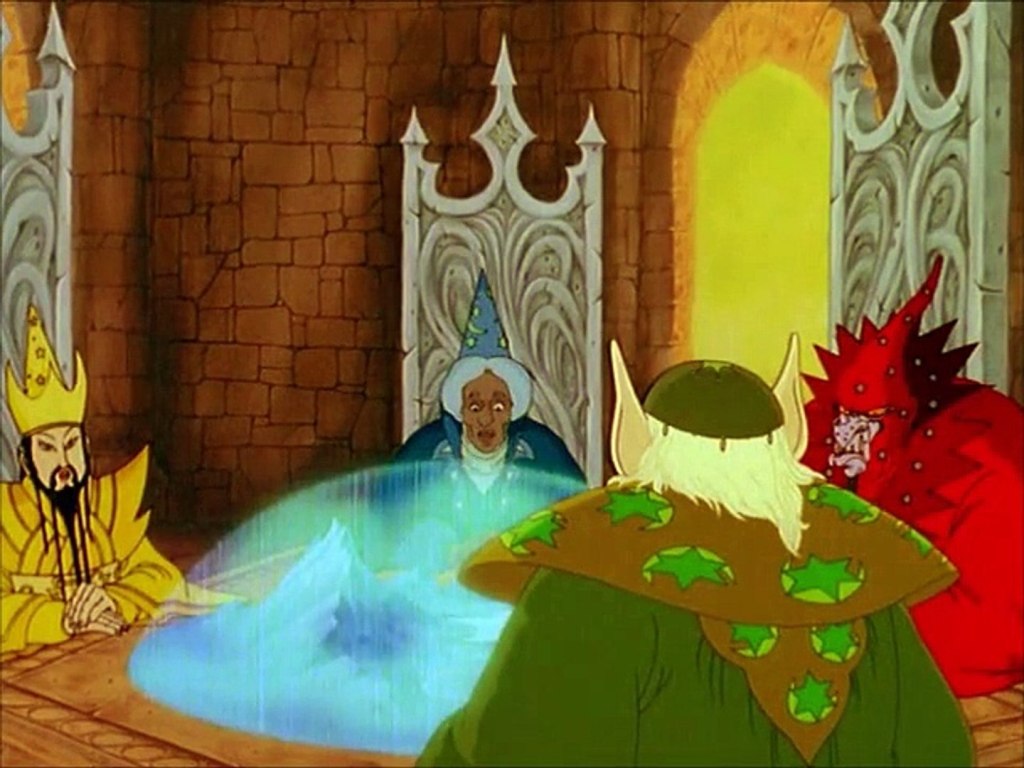
Here something happens that sort breaks the magic alliance – Ommadon is pretty sure that the palliative, pacifist and protectionist methods of the three other wizzards are doomed in the face of relentless progress. Here he exhibits a ruthless proto- accelerationist plan: to turn humans against themselves, to use hate, and the vicious destructive power of machinery to annihilate forests and thus human life support systems as such. Also capital in the form of accumulation and greed seems to be part of Ommadon’s answer to the challenge posed by progress to magic.
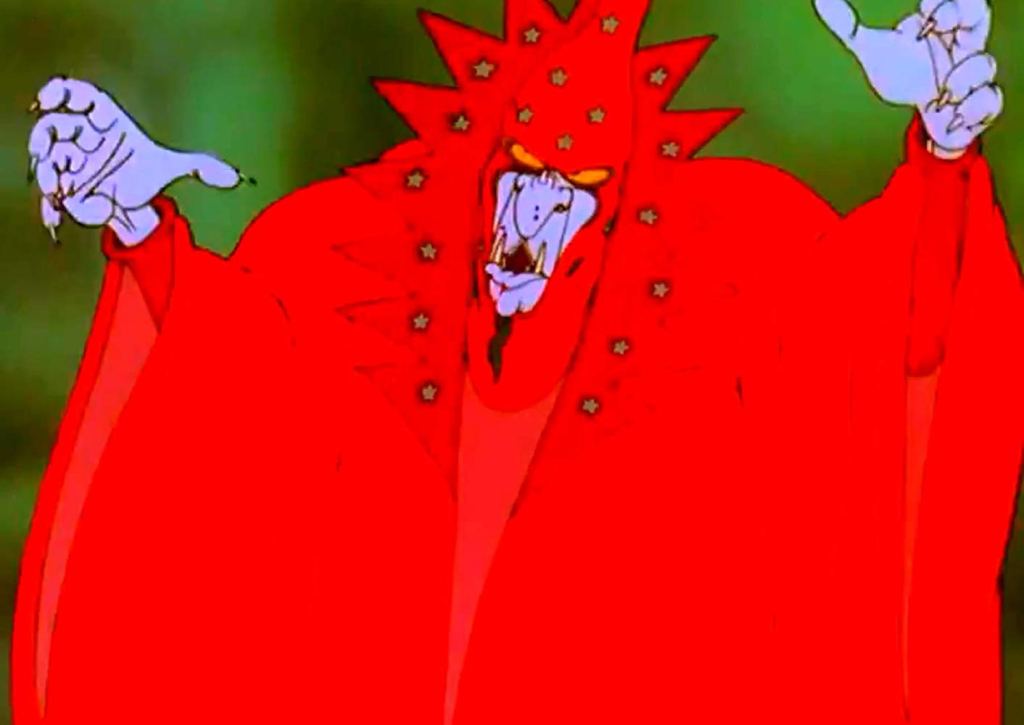
At the face of these, the three ‘good’ wizards resort to an apparently self-defeating tactic, they recruit a human from the future. It is probably exactly the opposite as the first Terminator. But then the anachronism works, not only does a Yank at King Arthur’s court miraculously solve medieval problems but he is actually more susceptible to the charm or lost magic, more retro, more into princesses like Melisande and unreal dragons. We could go endlessly on, with the end fact being that the modern skeptic is somehow enchanted with (also very modern) love in the end- the most powerful of magic that keeps him connected with the magic realms. There is a bit of Luceafarul material in there too. They bring somebody disenchanted with science and the dryness of it all – an escapist but with a science background to smuggle him to their world and make him start a quest against Ommadon. This is indeed the fulcrum of their argument – that he can be re-enchanted by what just seem his to own game creations which are in fact somehow ‘real’ and consequaential, make him part of an existing fragile world that needs his help.
Second spoiler moment and one of my favorites is the final confrontation, where everything seems lost and all the various allies (a wolf, a knight, archer, dwarf etc) are being killed by the evil dragon Bryagh in a desperate final battle. In the end only Peter, the nerd, geek and scientist faces the immensely more-than-human inhuman Ommadon that aims to squash all opposition. Here comes science into play – as counter spell against the evil black magic. Astronomy, particle physics and Einsteinian relativity theory formulas are being deployed and invoked exactly like magical spells, as ways to mercilessly dispel and even mock the darkest of the darkest magic. In the effect, while actually accomplishing what the good wizzards feared most, they also show the peculiar new magic of science that is as deeply operational as magic is supposed to have been even more so.
Lastly, not to be ignored is the fact that Peter’s mind is being transferred into the body of a dragon. In the beginning he is just cosplaying a young knight in a quest, then things go terribly wrong (or perfect depending on who is who). I consider this one of the greatest episodes in any speculative fiction – be it film, books or animation. It posits the fact that there is some mutual discomfort, that his mind and all its knowledge is not just being uploaded into another imaginary body. It does not even matter if it is an imaginary body or not, and this is the high speculative tenor of it. This body is actually quite substantial, it does work – it is a fire breathing, gas belching, flying dragon by the name of Gorbash. Gorbash is not gone, he actually sleeps inside the same head. You will have to discover the details of this unwanted body swap. This is a great experiment in dragon embodiment. It is not enough to write, to think and love dragons, one should also feel dragon, one should also switch places with them and see things from their perspective.

Suffice to say that Peter is thus forced to explore ‘scientifically’ the peculiarities of his new dragon (actually Gorbash’s) body. This has all sorts of unintended consequences, including how the others perceive him, befriend him or not or how he learns from the old dragon to be a dragon or the fact that he has still to master and practice his fire metabolism and hone his flying skills. Being a brainy does not help in this case, his geeky mind is still actually relatively harmless in the most terrifying body of all. He is basically almost learning like a person who had a stroke – how to move, what and when to eat, and how know it’d strengths amd weaknesses, how to handle the various compartments of his body.
